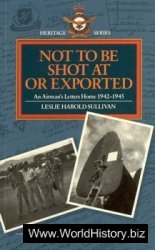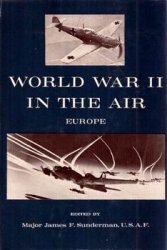Ust-Kan is our largest assemblage, containing 17.7% of the 9360-piece grand total. As such, it is for statistical sample size considerations the best of our 29 assemblages. For example, the decidedly low frequency of Ust-Kan cranial pieces cannot rationally be attributed to sampling error. Some heads may have been cut off before the remaining carcasses were hauled up the steep climb to the cave entrance, where further butchering and bone breakage can be shown to have occurred within the cave. On the other hand, head parts left in the cave may have been scavenged by hyenas and taken elsewhere. A third possibility is that crania, because of their shape, may have rolled out of the cave more often than less spherical elements. Clearly, there is an interesting taphonomic problem here involving missing heads that cannot simply be dismissed as due to small sample size.

Fig. 3.167 Ust-Kan, bone damage. Side A. Digestive pits and the feathered end show that this was a bone fragment that a hyena swallowed. However, the piece has unquestionable cut marks. This piece, and others like it, demonstrate that hyenas were scavenging and disturbing the occupation refuse left by humans. Note also the tiny mineral flowers that overlie two of the cut marks on the right. Thus, three processes through time can be recognized: (1) butchering; (2) acid erosion;
(3) mineral deposition. Actual width of image is 3.3 cm (CGT neg. IAE 6-18-03:18).

Fig. 3.168 Ust-Kan, bone damage. Another example of a cut bone fragment that had been swallowed.
The borders of the cut mark are rounded instead of sharp, but too narrow and deep to be pseudo-cuts. Actual width of image is 3.3 cm (CGT neg. IAE 9-8-00:11).

Fig. 3.169 Ust-Kan, bone damage. This Layer-7 piece has cut marks that had to have been made before it
Was burned, presumably by accident. Actual width of image is 3.3 cm (CGT neg. IAE 9-8-00:12).

Fig. 3.170 Ust-Kan, bone damage. A 12 cm long fragment of yak or bison femur found in Layer 3 has classic spiral fracturing. The two arrows point to internal spalling that seems to have been produced by tooth pressure, although there is no tooth scarring on the external surface at these locations, nor is there any sign of pounding (CGT neg. IAE 8-2-99:26).

Fig. 3.171 Ust-Kan, bone damage. Fragment with two notches on upper fracture line. Based on findings from Razboinich’ya hyena cave, small notches are associated with carnivore bone damage. Actual width of image is 4.0 cm (CGT neg. IAE 6-18-03:21).

Fig. 3.172 Ust-Kan, cut marks. A mandible fragment of a young animal (no tooth wear, active bone
Remodeling) with cut marks (lower right), dints (center), and tooth scratch marks (lower left). Sequence of damage could not be determined (CGT neg. IAE 9-20-00:34).

Fig. 3.173 Ust-Kan, cut marks. The very fine cut marks that more-or-less parallel each other also parallel the two larger chop marks, so defined by their lateral spalling. This situation suggests that the same tool was used to produce both types of damage - slicing and chopping. Mineral flowers cover parts of some of the fine cut marks. Width of image is 3.3 cm (CGT neg. IAE 9-20-00:28).

Fig. 3.174 Ust-Kan, cut marks. This interesting piece has several swarms of fine, closely spaced cut marks.
The reason for these swarms is not understood, unless the piece had served as a sort of cutting board. Note the mineral flowers in some of the cut marks (CGT neg. IAE 9-20-00:10).

Fig. 3.175 Ust-Kan, cut marks. Another candidate for having served as a cutting board, this one from Layer 4B. There are at least 35 cut marks and 55 abrasion striations. The piece was broken some time after the cuts on the lower border were incised. Width of image is 3.3 cm (CGT neg. IAE 9-20-00:14).

Fig. 3.176 Ust-Kan, cut marks. A third example of what looks to have been some sort of cutting
Board, from Layer 6-7. There are at least 29 cut marks. Width of image is 3.3 cm (CGT neg. IAE 9-20-00:16).

Fig. 3.177 Ust-Kan, cut marks. This piece from Layer 7 nicely shows that defleshing occurred prior to
Breakage to extract marrow. Some of the 40 cut marks had crossed beyond the breakage. Width of image is 3.3 cm (CGT neg. IAE 9-20-00:20).

Fig. 3.178 Ust-Kan, bone damage. The seven dints look suspiciously like tooth cusp marks, although no
Match could be made with any of the jaws in Ovodov’s comparative osteology collection. The very fine scratches or cut marks on the right appear new and are presumed to have been caused by archaeological processing. Width of image is 3.3 cm (CGT neg. IAE 6-18-03:16).

Fig. 3.179 Ust-Kan, bone damage. A hyena dental crown that had cracked in half during life. The animal lived for some time after this trauma because there is some wear at the crown-root junction. Width of image is 3.3 cm (CGT neg. IAE 6-18-03:13).
While large sample size makes Ust-Kan valuable for our perimortem taphonomy study, the stratigraphic mixing of Ust-Kan makes it less valuable for cultural replacement (microevolution) considerations. Mixing is of no real importance to our investigation since temporal divisions are more-or-less irrelevant to our objectives of identifying the perimortem damage signatures of humans and carnivores. Moreover, the faunal assemblages represented here were apparently all much the same in life. We offer a few other remarks for Ust-Kan in light of its assumed statistical reliability.
Heavy and extensive carcass processing occurred within Ust-Kan Cave. Of this we can be certain because of the large Ust-Kan sample size, and by extension to our other smaller but just as heavily processed assemblages. Large amounts of perimortem breakage characterize almost all of our assemblages with the exception of paleontological sites such as Krasny Yar and Shestakovo. The best single interpretation for such extensive damage by humans is that all possible nutrients were being extracted. To us this implies limited environmental resources that would have in turn limited human population size and demographic expansion in late Pleistocene Siberia.
Postmortem breakage is very infrequent in Ust-Kan, whereas it is generally more common in our other assemblages. While some postmortem breakage is due to archaeological recovery, and some is due to osteological characteristics of different species, especially mammoth long bones and ribs, we sense that a true taphonomic problem exists that is not simply cave versus open site preservation differences. There is also the well-known relationship between postmortem breakage and surface weathering, to which bone damage due to changes in moisture content may be enhanced by annual variation in wet-dry freezing and thawing. We suggest that the amount of postmortem breakage is a potential guide to the past environmental temperature and moisture stability wherein an assemblage is found. Our visits to Ust-Kan revealed site advantages and disadvantages for occupation and bone processing. The advantages are that it has good protection from weather conditions, it is an excellent look-out site, there is water nearby, and it is a highly defendable site should there have been inter-group conflict. On the other hand, it is hard to reach, and hauling wood for heating and cooking up the steep slope would not be very cost effective. In sum, we view the Ust-Kan bone damage as reflecting the positive and negative qualities of the cave. All things considered, we hypothesize that seasonal occupation of the cave is a more parsimonious view of its use. Seasons may have lasted for generations rather than annually. Here, as elsewhere in this study, we feel there is more evidence for discontinuity of human occupation in our Siberian study area than for continuity. End-hollowing is relatively common in Ust-Kan. It is generally less so in our other assemblages that lack direct or indirect evidence of hyenas, such as Boisman II, Bolshoi Yakor I, Kamenka, Kurla I, Mal’ta, Straschnaya, Varvarina Gora, and Yelenev. All carnivores are variously capable of end-hollowing, but we feel, as mentioned earlier, that relatively low amounts in an assemblage indicate small - to medium-sized carnivore (fox, dog, wolf) processing (and possibly also mineral-seeking herbivores), and large amounts, say around 10% or more, indicate large carnivore activity (hyena, bear, lion). Naturally, carnivore age, number of carnivores, and time involved in processing are further considerations necessary for microtaphonomy analyses.
We have generally presumed, following our Razboinich’ya studies, that notching on a fracture surface was pressure-produced by a carnivore. Ust-Kan has to some extent upset this notion. Both carnivores and humans produced notching in the Ust-Kan assemblage. Human-induced notching could best be identified when there were hammer stone or anvil abrasions close to the notch. These notches seem to have been formed by blows whose purpose was to break bones. Both stone and bone or antler tools are implicated - stone when abrasions are present, bone when they are not present.
The acid-eroded pieces fall into two fairly distinct classes: heavy erosion and very slight erosion. We presume that the former represents a complete transit of the alimentary tract, while the latter could represent vomiting or full transit encased in a wad of hair or ligament. Small numbers of lightly etched stomach bones must also be considered as products of foxes and wolves. Most of the Ust-Kan stomach bones are heavily eroded, indicating that they had been defecated.
Some stratigraphic problems with Ust-Kan are attributable to hyena digging and burrowing activity. This suggestion rests with the high frequency of stomach bones at Ust-Kan, stomach bones with cut marks, and five that had also been burned.
The hyena stomach bones with cut marks document with no question whatsoever that hyenas were scavenging the human game refuse left in Ust-Kan Cave. That scavenging activity must have involved digging, just like modern dogs jumping up into open dumpsters and pawing through the trash in search of items to eat. One wonders when the scavenging occurred at Ust-Kan. Were humans in the vicinity, or had they left days or weeks earlier in their own search for additional game? Might the hyena pack, in a state of hunger, have entered the cave while the Mousterians were still inside? Might they in their hunger have attacked the people? Whatever the scenario, we feel that the acid-eroded pieces with cut marks are especially strong evidence of the interaction between Pleistocene humans and hyenas in Siberia, and it is this evidence that makes us wonder if hyenas and other large carnivores had some effect on delaying human expansion into the New World.
In conclusion, we note that our perimortem taphonomy work has had an influence on the interpretation of cave occupancy in Siberia. Before our work became known, cave occupancy and bioturbation were not issues. Now, at Ust-Kan at least, it is being given much consideration. Postnov feels that during the time of formation of Layers 1, 9, and 10, humans rarely used the cave. During the formation of Layers 2, 3, 5, 7, and 8, humans more commonly occupied the cave. During the time of Layers 4 and 5 human presence in Ust-Kan was considerable, as assessed on artifact frequency. As in other sites in this study, such as Okladnikov Cave, human occupancy was apparently discontinuous. Discontinuity allows for the possibility of different populations entering the region, as is classically indicated for the Cro-Magnon replacement of Neanderthals in Europe and for the Russian replacement of most native Siberians in more recent times.




 World History
World History









